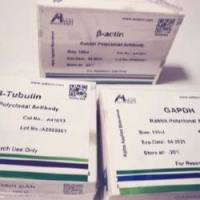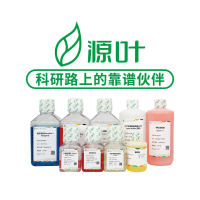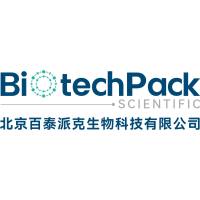TRICINE GELS Protocol (For Low MW proteins (
互联网
Stock Solutions1) Gel Buffer: 3 M TrisHCl pH8.45 + 0.3% SDS. Keep RT. (Prepare: 18.15gr Tris + 150mg SDS + H2O up to 50ml. Adjust pH before you add the SDS)
2) 40% Acrylamide solution 29:1 (Acrylamide 29 / Methylene bis Acrylamide 1) or 40% Acrylamide solution 19:1 (Acrylamide 19 / Methylene bis Acrylamide 1) for short peptides. Keep 4°C.
3) Glycerol 70%
4) Cathode buffer 10X (upper buffer): 1M Tris + 1M Tricine + 1% SDS pH 8.25. Keep RT. (Prepare: 24.2gr Tris + 35.84gr Tricine + 2gr SDS +H2O up to 200ml. Adjust pH 8.25 before you add SDS).
5) Anode buffer 10X (lower buffer): 2.1M Tris pH8.9 Keep RT. (Prepare: 48.4gr Tris. Adjust pH 8.9 and H2O up to 200ml).
6) 10% Ammonium Persulfate (APS). Keep less than one month at 4°C.
7) TEMED
| <center> Glycerol</center> | <center> 5ml</center> |
| <center> SDS</center> | <center> 1gr</center> |
| <center> ß Mercapto Ethanol<br /> (or 0.25M DTT)</center> | <center> 2.56ml</center> |
|
<center>
0.5M TrisHCl pH 6.8 </center>
|
<center> 2.13ml</center> |
|
<center>
Bromo Phenol Blue</center>
|
<center>
traces</center>
|
Keep in aliquots of 1ml at -20C
| <center> SOLUTIONS</center> | <center> Separating gel<br /> Short gels: 4</center> Large gels: 2 | <center> Separating gel<br /> Short gels: 2</center> | <center> Stacking gel<br /> Short gels: 4</center> | <center> Stacking gel<br /> Short gels: 2</center> |
| <center> Acrylamide Solution</center> | <center> 10 ml</center> | <center> 5.00 ml</center> | <center> 2.12 ml </center> | <center> 1.05 ml </center> |
| <center> Gel Buffer</center> | <center> 10 ml</center> | <center> 5.00 ml</center> | <center> 5 ml</center> | <center> 2.5 ml</center> |
| <center> Glycerol 70%</center> | <center> 4 ml</center> | <center> 2.00 ml</center> | <center> 0 ml</center> | <center> 0 ml</center> |
| <center> H2O</center> | <center> 6.2 ml</center> | <center> 3.1 ml</center> | <center> 13.44 ml</center> | <center> 6.70 ml</center> |
| <center> 10% APS</center> | <center> 133 µl</center> | <center> 66 µl</center> | <center> 160 µl</center> | <center> 80 µl</center> |
| <center> TEMED</center> | <center> 13.2 µl</center> | <center> 6.6 ul</center> | <center> 16 µl</center> | <center> 8 µl</center> |
Add TEMED and APS at the end. Gently swirl the flask to mix, being careful not to generate bubbles. Pipette the solution to a level of 4cm of the top. Add 0.3ml of n-buthanol. A very sharp liquid interface will be visible within 10-20min. Let polymerize the gel for another hour at least. Rinse the surface of the gel with H2O before pouring the stacking gel.
Sample Preparation
Prior to adding the sample buffer, keep samples at 0°C. Add the SDS sample buffer (RT) to the sample (still on ice), and boil at 100°C immediately 3 to 5 min. DO NOT leave the sample in SDS sample buffer without heating; endogenous proteases are very active in SDS sample buffer and can cause severe degradation. Once heated, sample could sit at RT for a short time until loading, or at -20°C for a long time.
For a gel thickness of 0.75mm and 15 wells applied 10-25ug protein of a complex mixture, when staining with Coomasie Blue and 0.5 to 5ug for samples for one or few proteins. If silver stain is used 10 to 100-fold less protein can be used.
Samples can be concentrated or interferences (salts, etc.) eliminated with TCA, acetone, TCA-DOC, ethanol, etc. (see attached Protocol) . Potassium ions in particular must be removed since they precipitate the SDS.
Some proteins such as nuclear non-histone proteins and membrane proteins, require the presence of 8M urea in the SDS sample buffer to get complete solubilization.
Some membrane bound proteins undergo aggregation at temperatures above 40-50°C. In this case incubate 30min at 40°C with sample buffer.
A shift in the migration distances of proteins with internal disulfide bridges could be observed by incubating samples in SDS in the presence or absence of reducing agents (mercaptoethanol, DTT, DTE, etc)
Running conditions: Start running at 60mA 200V 10minutes (to get samples inside stacking gel), and then continue at 35mA 200V
Staining Solution
| <center> Methanol CP </center> | 500ml | <center> 50%</center> |
| <center> Acetic Acid CP</center> | 100ml | <center> 10%</center> |
| <center> H2O</center> | 400ml | |
| <center> Coomasie Brilliant Blue R</center> | 2.5gr | <center> 0.25%</center> |
Keep flask on dark at RT
Destaining Solution
Keep flask on dark at RT









